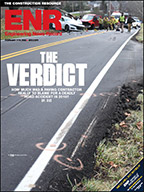ENR's FutureTech San Francisco event attracted over 300 construction technology professionals who attended and participated in a day's worth of demonstrations of the latest and future uses of technology in the industry.
During one panel discussion moderated by Isaac Sacolick, CIO of McGraw-Hill Construction, called 'IT From the CIOs Perspective,' CIOs debated some of their main issues in delivering the next wave of information technology services. They also offered tips on how to balance their firms' demands to innovate new systems with the cost to develop and support those innovations.
One of the main points: If a firm is building unique applications for the firm's end-users, then "don't try to get the old world into the new world," said Thor Gier Ramleth, CIO of Bechtel Group Inc. "If you do then you're only paving over the cow path," he told the audience, referring to attempts to make desktop-centric computing applications somehow work on smaller devices, for example. In other words, when deploying new applications, especially mobile apps for the enterprise, build for the type of computing devices using the applications.
"It's a balance," said Richard Bach, SVP for IT at Turner Construction Company, when asked by the audience how to approach building software applications that fit the needs of the firm and its clients.
Turner offers an innovation award to any employee (in 4 different categories, and different levels) who helps drive innovation, "so they're actually competing on ideas they develop themselves," he said.
"Those that win will be implemented. It's part of our mission, but it's also a balance. We get constant feedback on the systems we have to make sure they meet needs. [Meanwhile,] we have a new crop of grads coming into the company who want to do things differently, so we've got to address those needs. But we do have to balance that with some of the core functionality [we have in place] with the needs of financial reporting, and to still create a collaborative environment."
More firms are making new apps because today's technology is making that easier, added Dennis Sheldon, AIA, CTO of Gehry Technologies of Los Angeles. Web Services protocols are making it easier for this to happen.
Sheldon said he disagreed with the notion that more firms are building their own apps "because tech isn't doing what you want it to do." Instead, he countered, "the emerging paradigm in technology is that you do what you want with it. I think people are moving (shall we say) away from this idea that a product comes in a box and you install it, and if you don't like that one than you get a different one." The boundaries of technology are starting to erode. "We're seeing this with YouTube and Facebook getting plugged into each other by design," for example. "The common infrastructure of the open standards: that's the operating systems, that's the application. This is the mashup concept."
After all, he added, application-programming interfaces (APIs) from CAD software vendors have been around for quite sometime, which allow you to customize specific apps and functions for your project, or to do certain tasks better and faster.
What's different now is that the products themselves have become customizable, such as a web-based dashboard where you can plug and play the data you need, he said. "Why do we change technology? It's because we want to and because we can. It's much easier to do it now. This proliferation of knowledge about how to do it: That's what technology is supposed to do."
The key trend now, added Bechtel's Ramleth, is to find a standard that helps more systems and data types interface with each other. So if you're an architect who uses Autodesk's AutoCAD and the one you're supplying it to uses Bentley's CAD products, why shouldn't that data be readable between the two?




